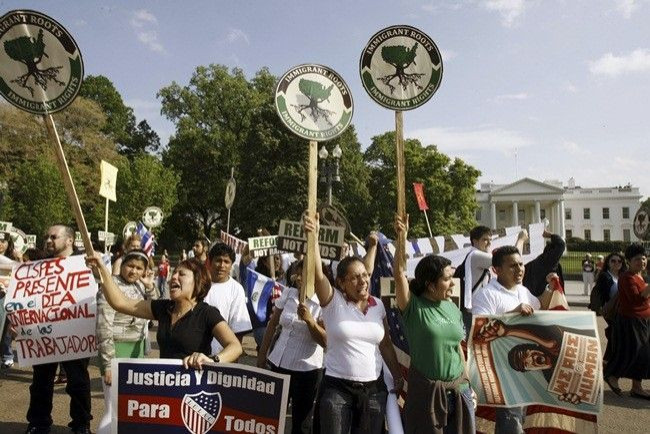Census 2010 results to show U.S. Latino growth

The U.S. Latino population, which several decades ago was mostly concentrated in the Southwestern part of the country, is expected to show continued growth and geographic expansion in the 2010 Census report.
While specific data about the U.S. Latino population was not released in the first wave of Census data on Tuesday, another recent study by the Census Bureau using different methods to estimate shows a growth of nearly 29 percent from 2000 to 2009.
The American Community Survey released last week estimated that there were 45.5 million Latinos or Hispanics in the U.S. as of 2009. Comparing that estimate to the 2000 Census report of 35.3 million Latinos or Hispanics at that time shows a rise of 28.9 percent in the population.
In a 2006 Census study of the Latino population, the Census Bureau had estimated that by 2010, the total would be 47.8 million.
Data released on Monday from the 2010 Census shows that population growth was greatest in states where the Latino or Hispanic population was greatest.
While the concentration of Latinos in the U.S. was greatest in the Southwestern U.S. in 1980, Census data shows that by 2006, the Latino population was also growing in the Northwest, Great Lakes region, and the U.S. East Coast.
In 1980, the states with the heaviest concentrations included California, Nevada, Arizona, New Mexico, Texas, Colorado and some portions of Florida. While that continued to be the case in 2006, growth of the Latino population was also seen in other states such as Washington, Oregon, Idaho, Illinois, North Carolina, Virginia, Maryland, New Jersey, Pennsylvania, New York, Connecticut, Massachusetts and Rhode Island.
Looking at total population growth results in the 2010 Census, irrespective of race and ethnicity, may give some clue as to where the Latino population grew, although final figures may differ due to various factors. The largest population growth included many states with a growing Latino population.
The total population in Nevada, irrespective of race and ethnicity, rose 35.1 percent. Arizona grew 24.6 percent. Texas was up 20.6 percent. North Carolina rose 18.5 percent. Florida grew by 17.6 percent. Colorado grew by 16.9 percent. Washington rose 14.1 percent. New Mexico was up 13.2 percent. Oregon grew by 12 percent and California was up by 10 percent.
By place of origin, according the ACS survey released last week, the largest Latino groups in the U.S. were Mexicans at 29.3 million, Puerto Ricans at 4.1 million, Cubans at 1.5 million, Salvadorans at 1.5 million and Dominicans at 1.2 million. Latinos from Central American countries totaled 3.6 million. South Americans totaled 2.5 million.
Latinos or Hispanics who classified themselves as Spaniard, Spanish, Spanish American and others totaled 3 million.
© Copyright IBTimes 2024. All rights reserved.





















